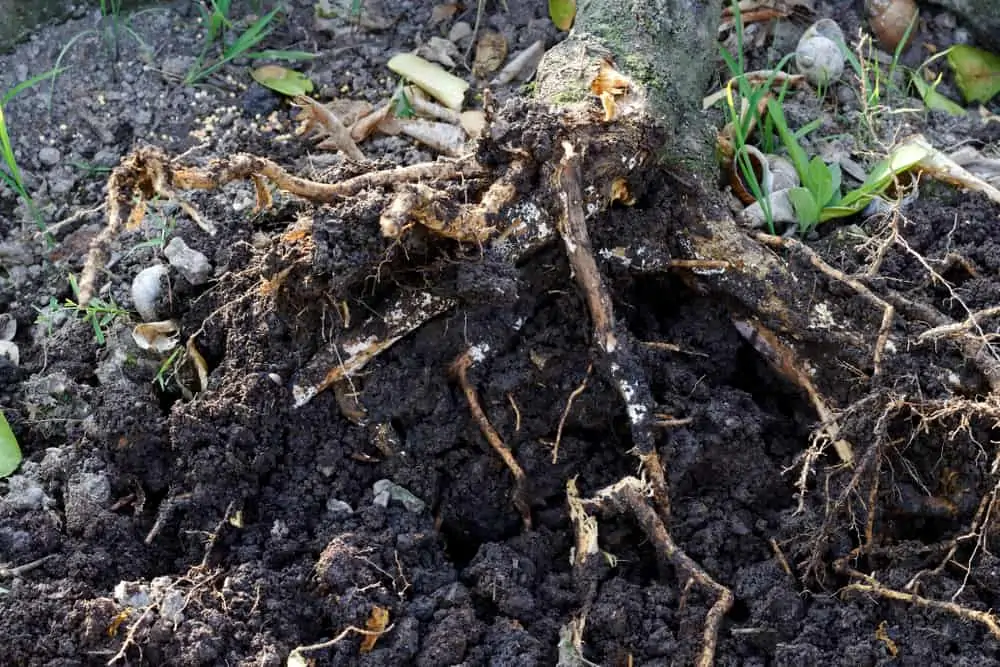Prevention is key with root rot. You must only water the plant then the soil is completely dry to prevent over-watering. This can be checked by sticking your finger an inch down into the soil – if it’s dry, it can be watered.
A soil with a good drainage system is also important to prevent root rot, so no old water is left to linger by the roots.

Root rot can be found by the appearance of yellow leaves and discoloration in the stem. You should lift the plant out of the soil to inspect the roots – brown and mushy roots will be a sign of rot.
Cut these diseased roots from the plant to prevent the rot from spreading. Then, cut an equal amount of leaves off the plant according to how many roots you cut. This is because fewer roots will have less power to feed the plant.
After this, prepare new soil in a new or clean pot. Pot the plant into its new home. Make sure to dispose of the rotted roots properly to prevent spreading of disease. If the plant is completely riddled in root rot, there is no saving it, and you will have to dispose of it.
Does hydrogen peroxide kill root rot?
Hydrogen peroxide is a great way to kill root rot. Used accordingly and sparingly, it can protect a plant from a variety of diseases. Some people like to put a small amount in with the soil for this very reason.
However, hydrogen peroxide, like with human skin, can be harmful to plants if used without care. It must be used with a significant amount of water – around 3% of hydrogen peroxide to 97% water – to provide a gentle amount of chemicals that won’t harm the plant.
Hydrogen peroxide is great for preventing the spread of root rot when repotting diseased plants. After removing the rotten roots, you should clean the existing or new pot with disinfectant thoroughly before repotting the plant to stop the spread of rot. You can use higher concentrations of hydrogen peroxide in this instance.
Plant owners like to spray the leaves of their plants with a spray bottle of water, and a small amount of hydrogen peroxide can be used in this. Not only will this provide hydration to the leaves without soaking the soil and increasing the chances of root rot, but it will also work to combat other issues that plants may experience such as pests like spider mites and slugs.
However, using hydrogen peroxide around plants comes with potential impacts on the ecosystem. High concentrations of hydrogen peroxide can be damaging to the plant as it can corrode the leaves and stem.
Also, whilst hydrogen peroxide is useful for protecting the plant from pests and bugs, most insects like snails and earthworms are useful to a garden ecosystem.
As long as you use the smallest amount of hydrogen peroxide to water, it can be a wonderful cure for killing and preventing root rot in plants.
Can root rot be reversed?
With proper care, root rot can be reversed in some cases. It’s all about prevention and keep on top of your plant.
The main cause of root rot is overwatering, so you must make sure to keep your plant in drainable soil and you should only water it when the soil is totally dry. To check this, stick you finger an inch into the soil to see whether it is still damp or not.
Root rot will be obvious by a change of color and texture in the leaves and stems. If the leaves have turned yellow, you should take the plant from the soil to inspect the roots.
If the roots are brown and mushy, this is a sign of root rot. Then, cut off the diseased roots and dispose of them in the compost. You should then cut the same amount of leaves as roots, because fewer roots will have less power to feed all of the plant.
You will need to prepare a new or clean pot with new soil for repotting. Every part of the rot should be cut off to prevent it from spreading to other plants. If you are using the same pot, make sure to disinfect the pot thoroughly to kill any lingering bacteria.
If your plant is riddled in root rot and has no clean roots left after cutting the diseased ones away, this cannot be reversed. Plants that are covered in root rot can be a danger to surrounding plants, and should therefore be disposed of.
In short, root rot can be reversed if you pick up on the signs quickly. Early stages of root rot can be stopped by the appropriate care, but unfortunately, nothing can reverse plants that are riddled with root rot.

